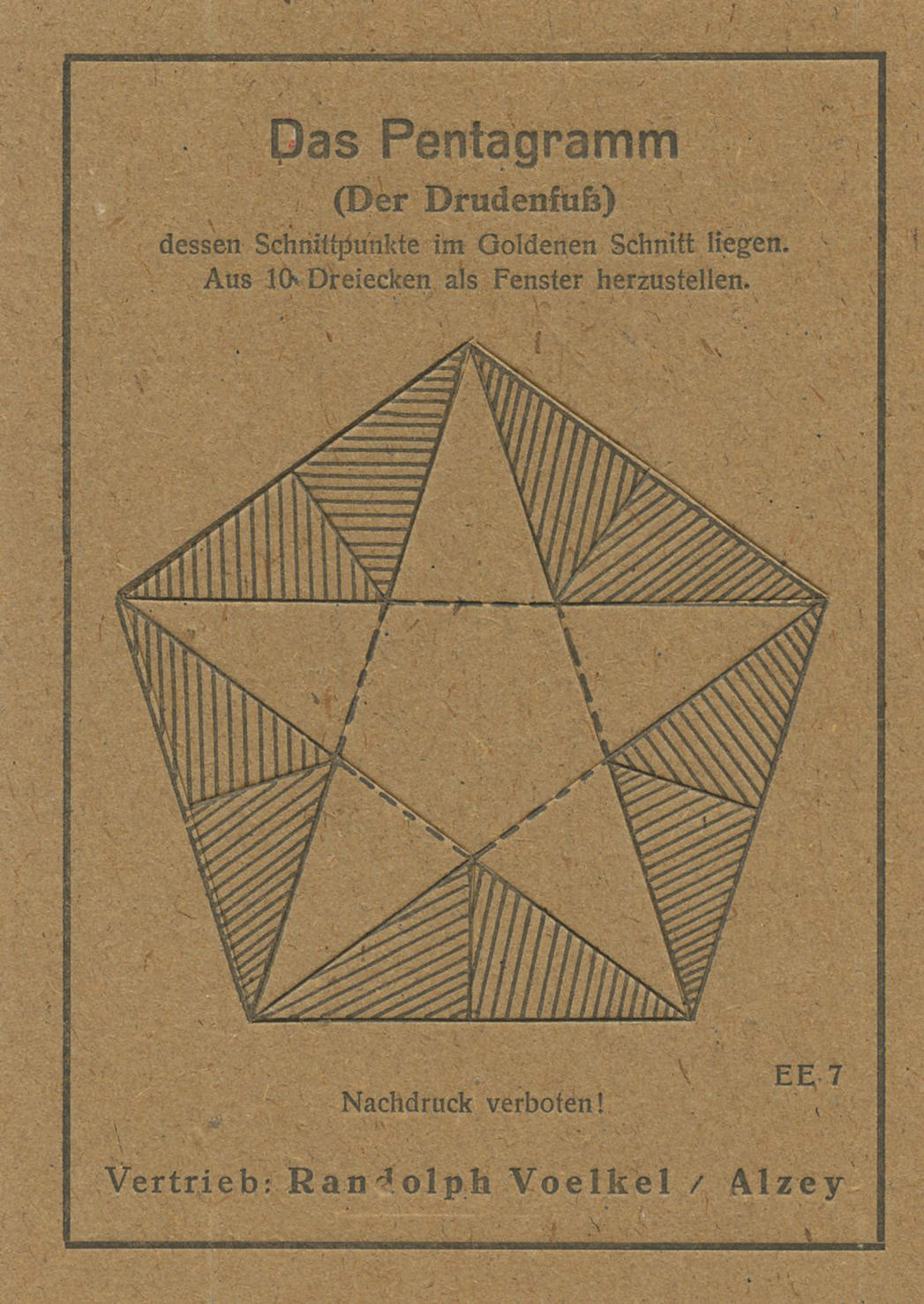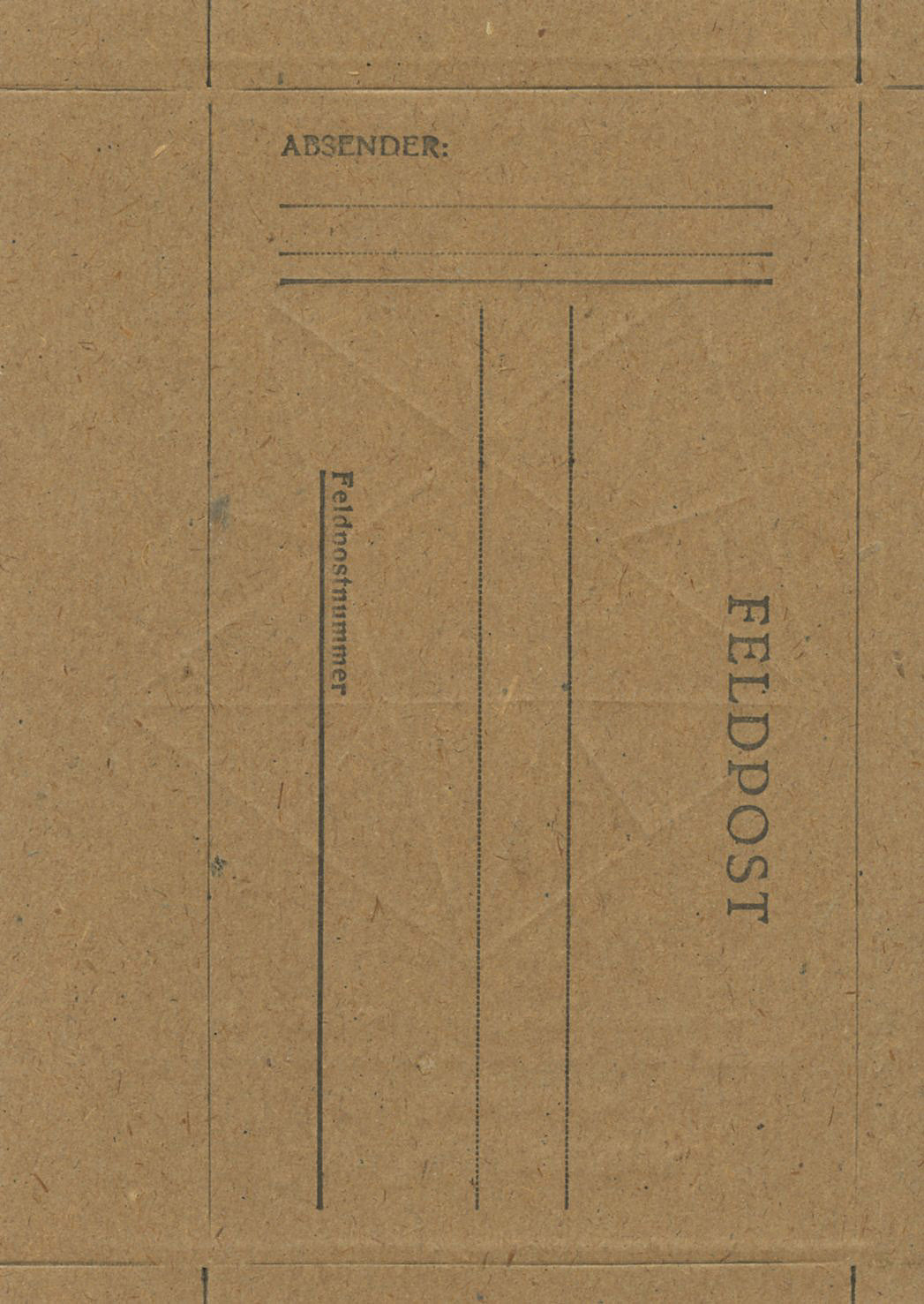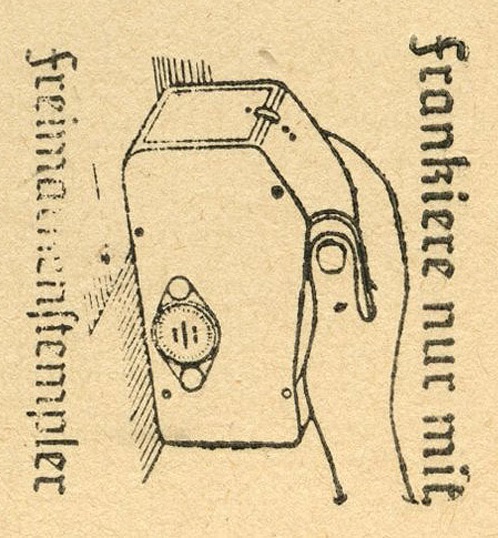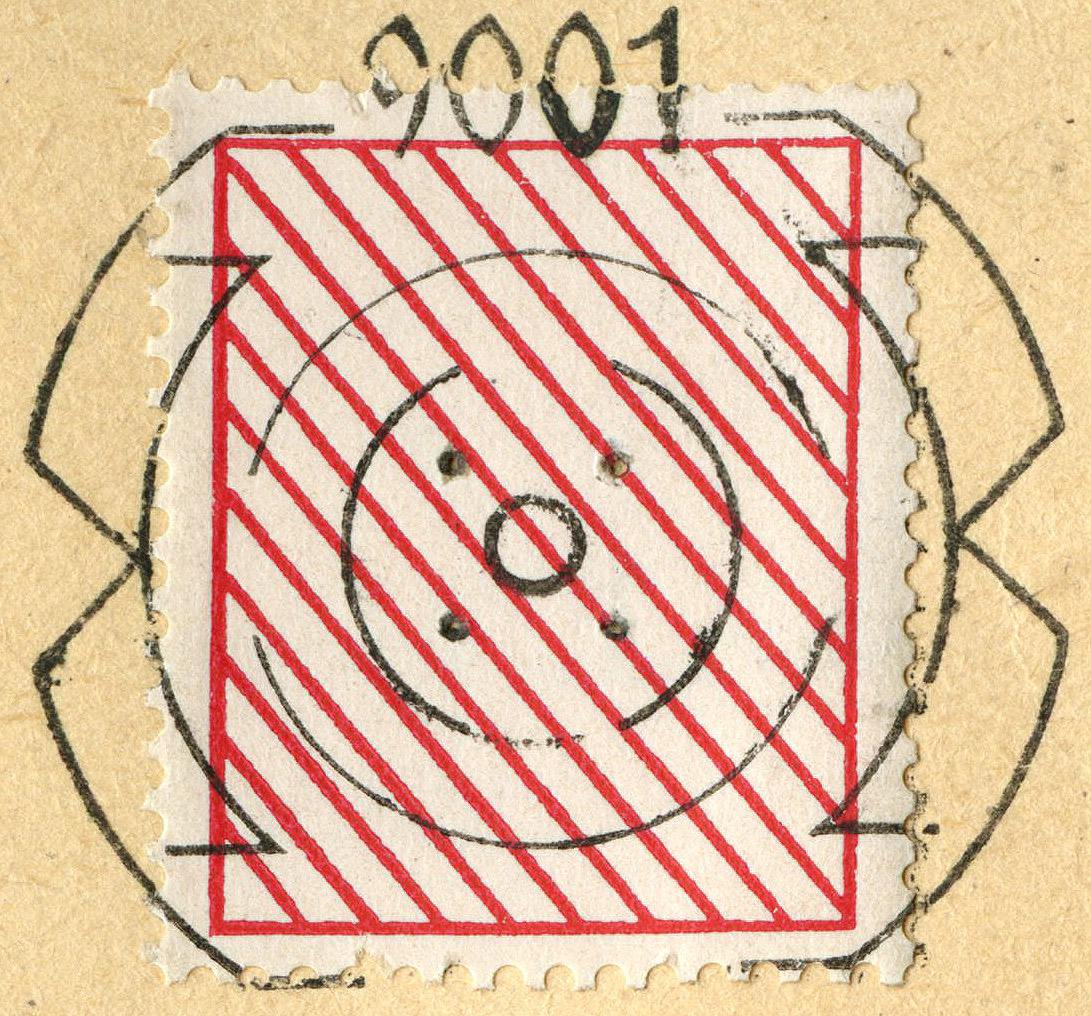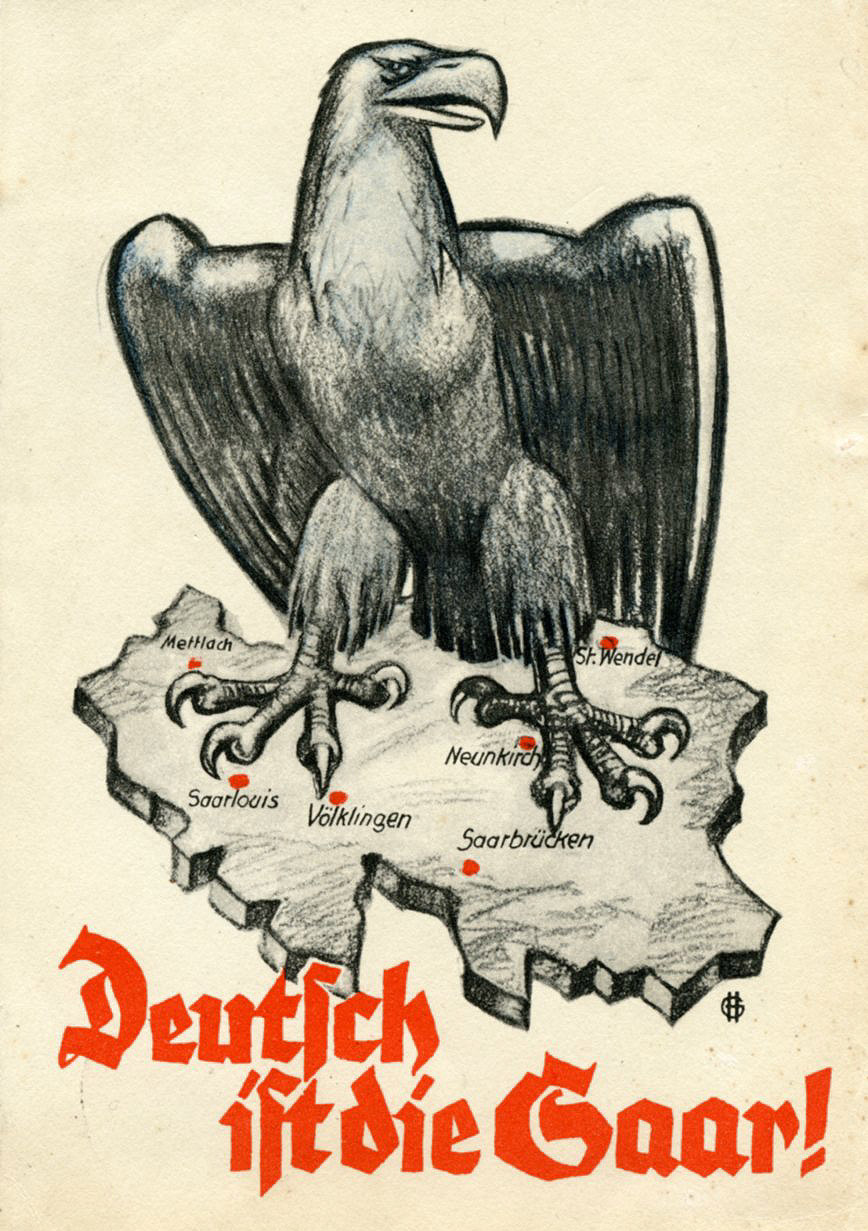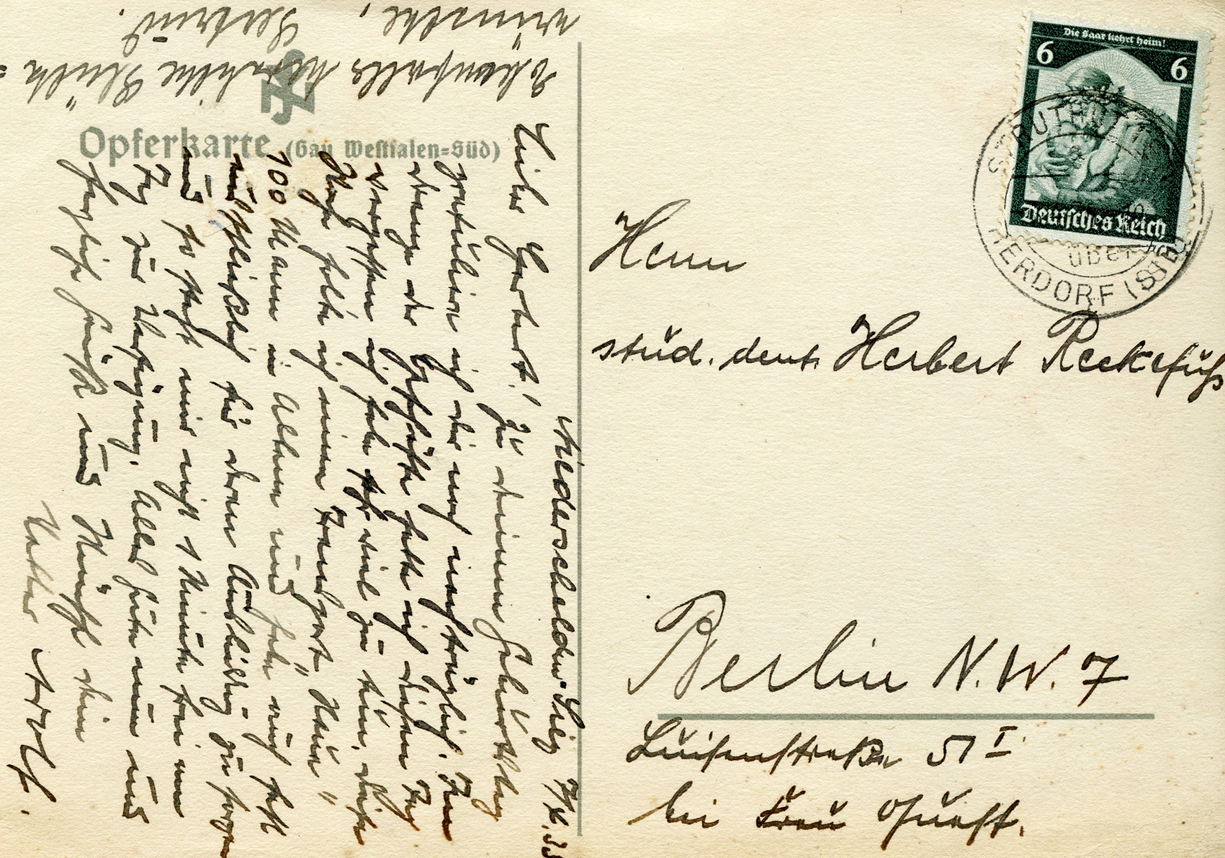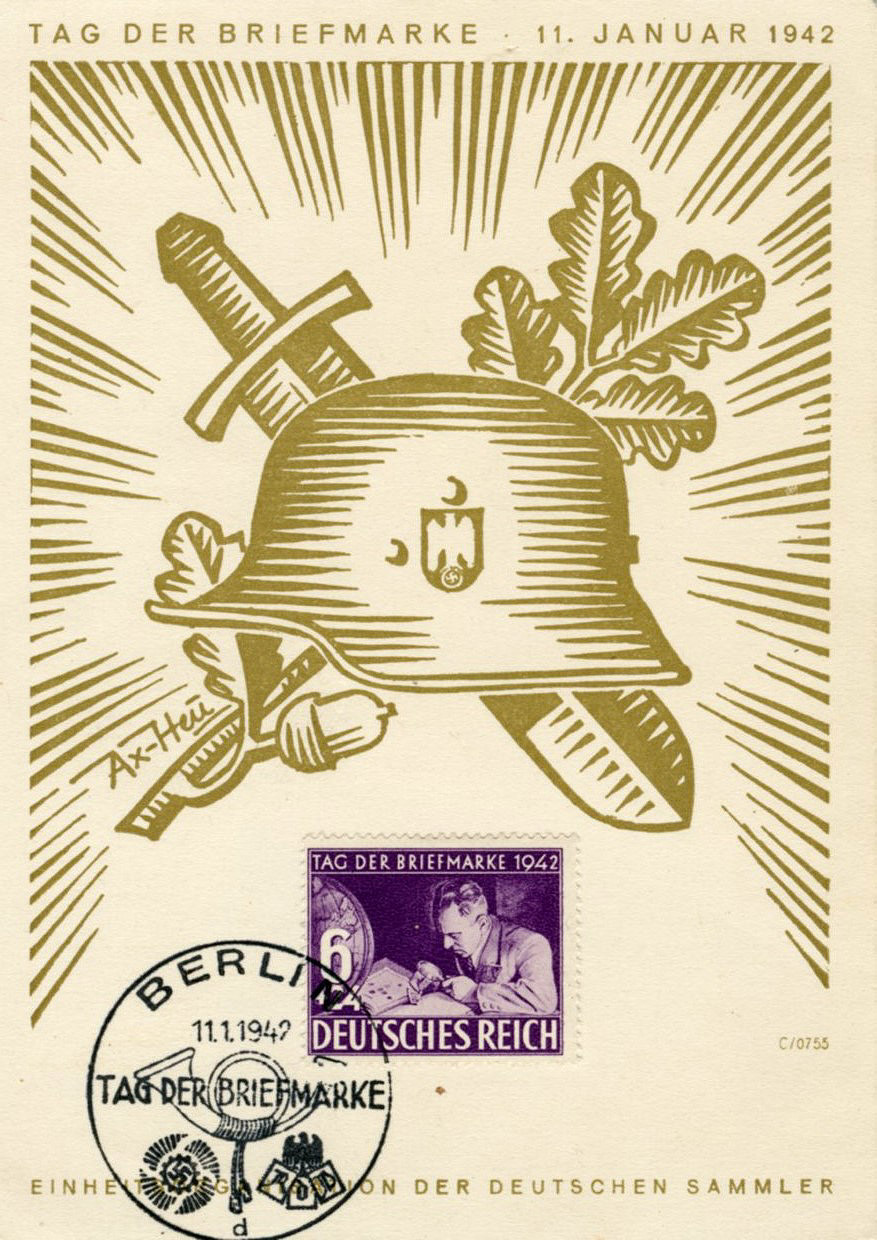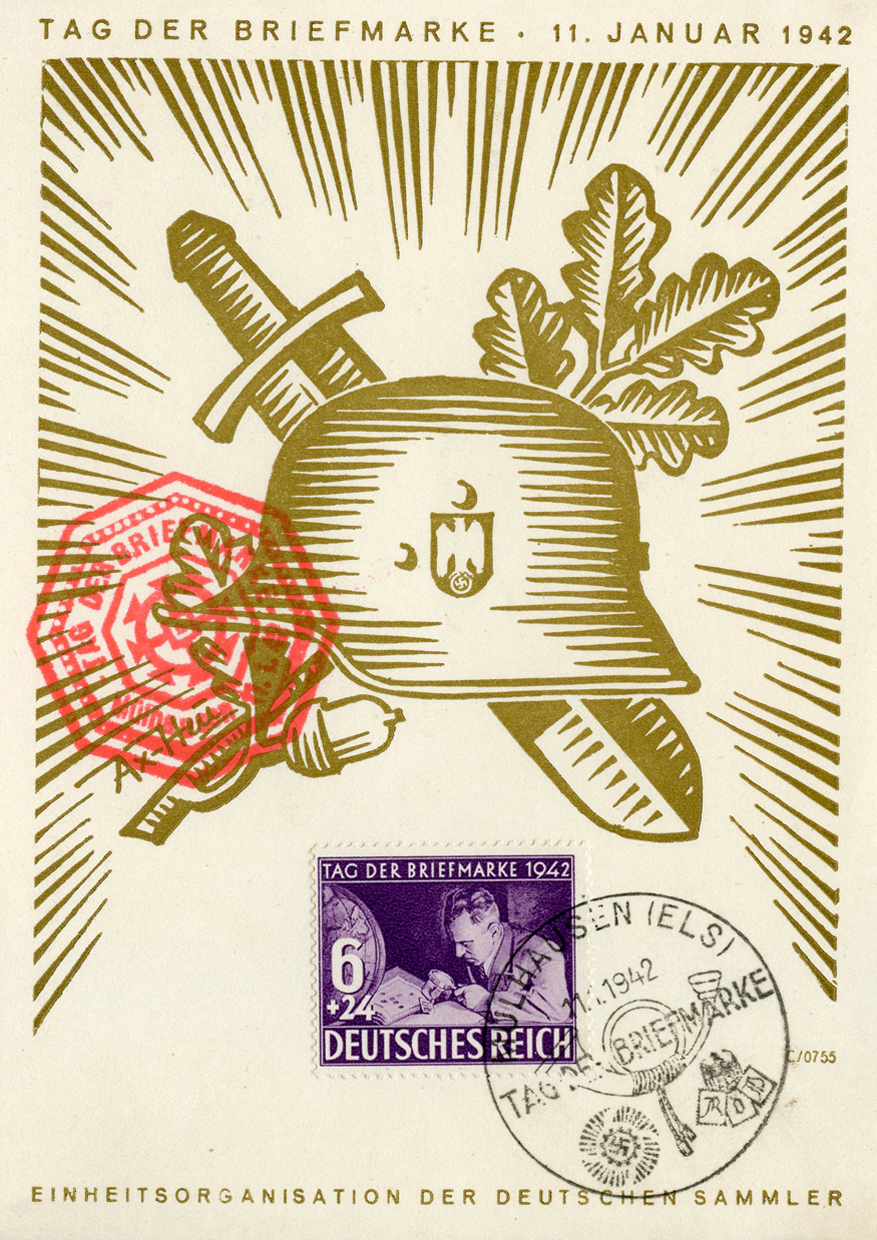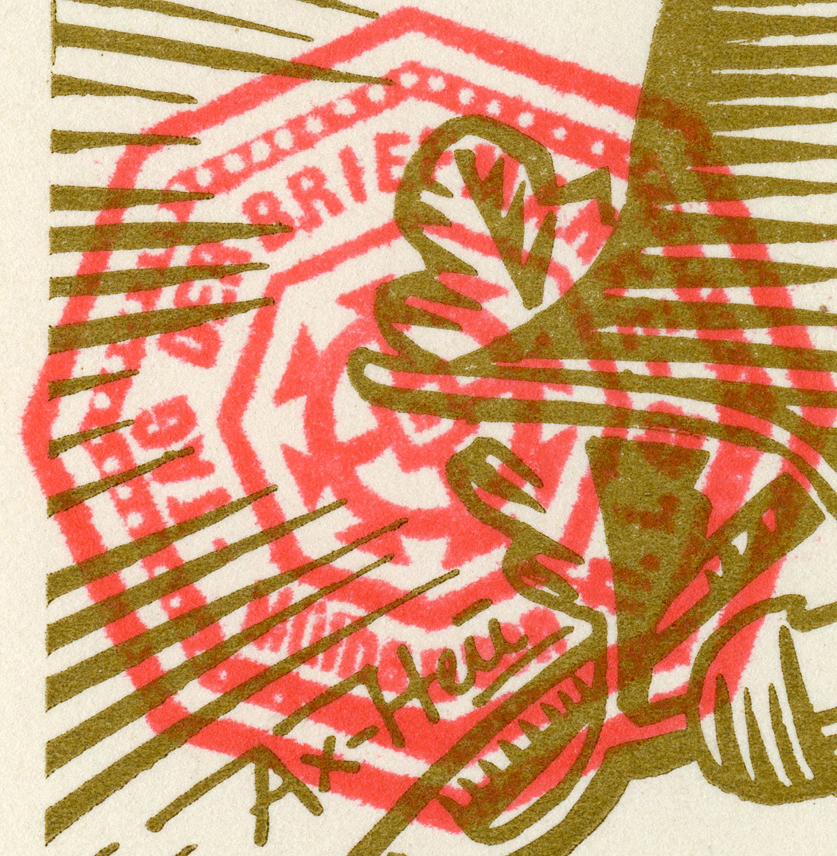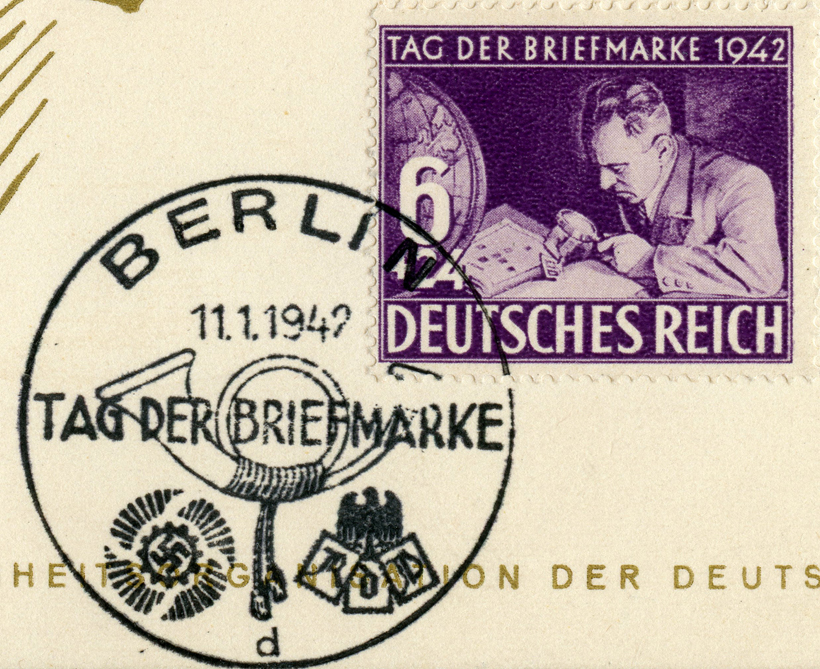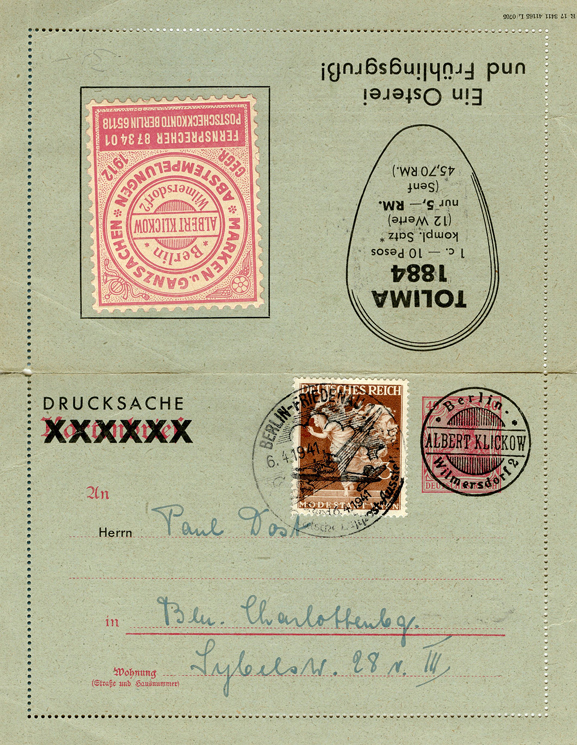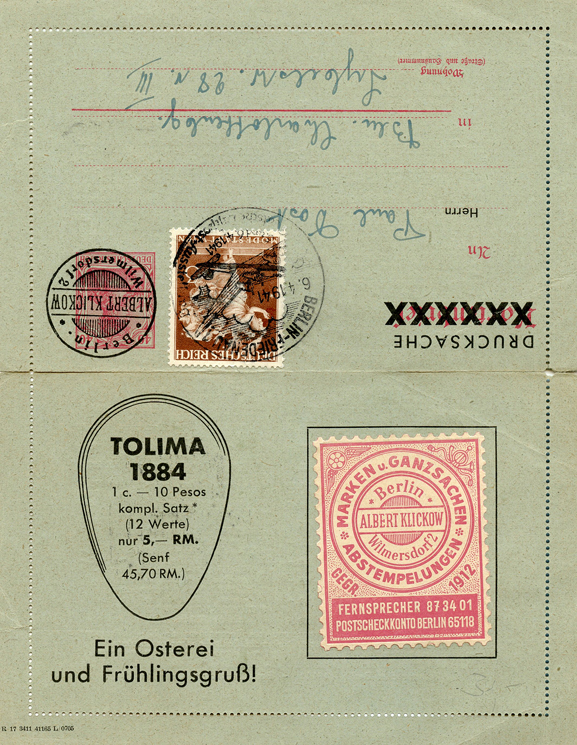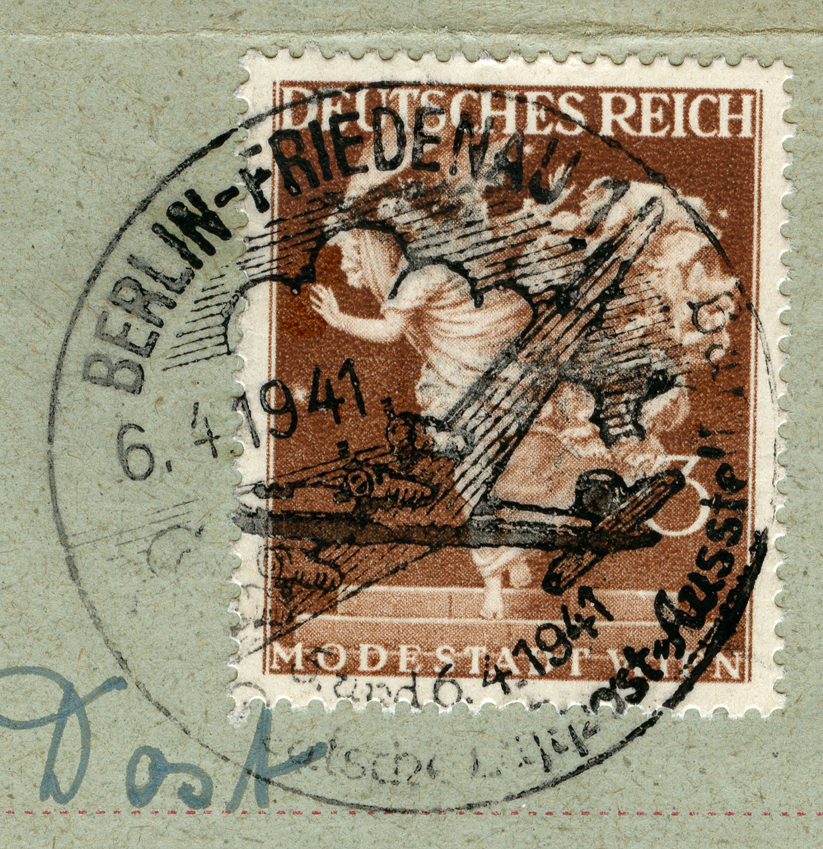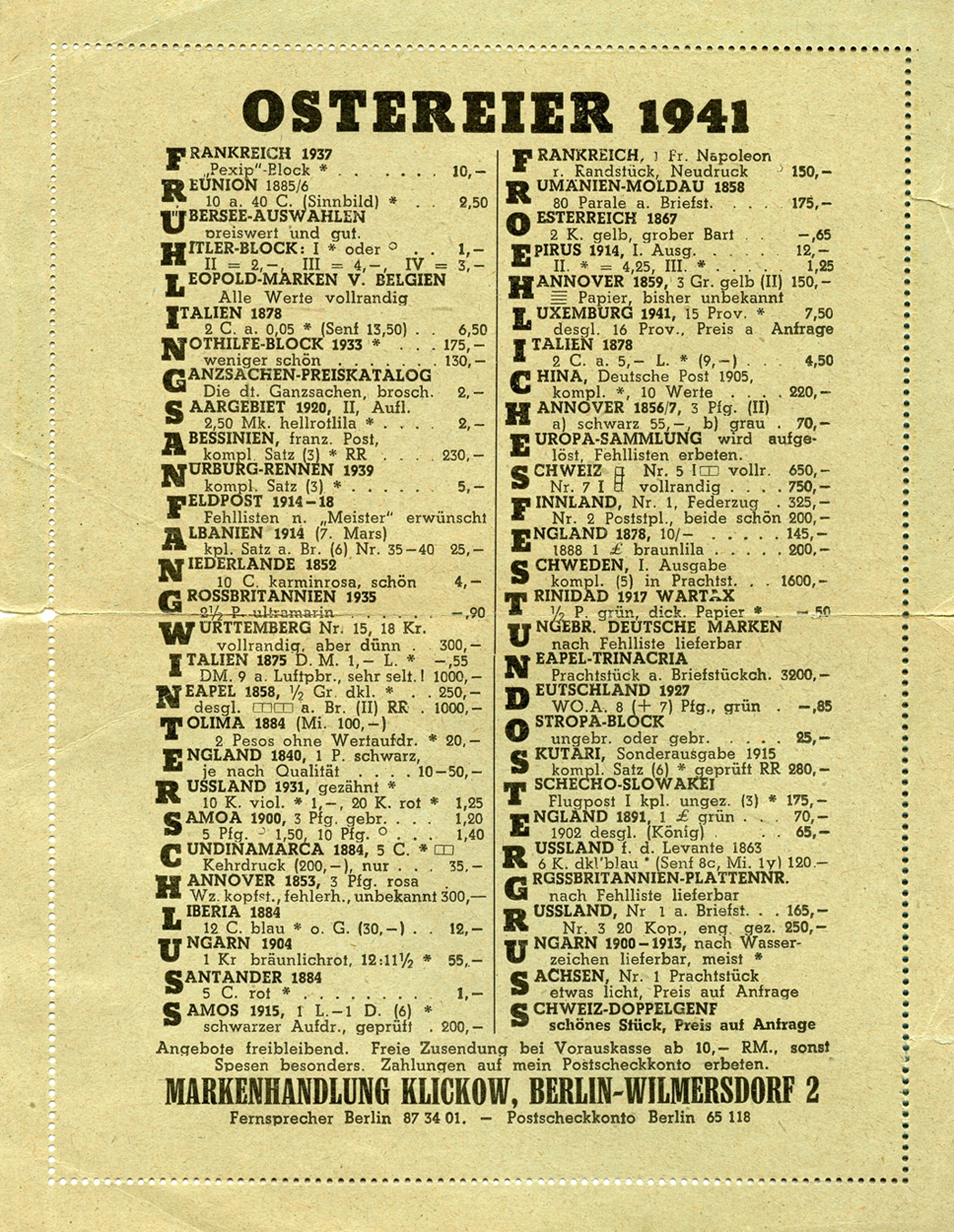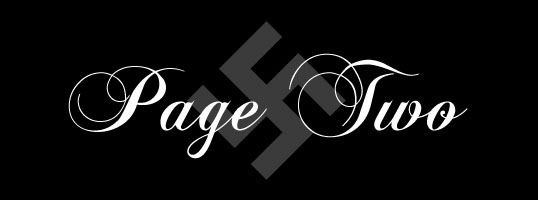
The first postage stamp was issued in Great Britain in 1840 and is referred to as the 'Penny Black' (it is a black one cent stamp featuring the queen).
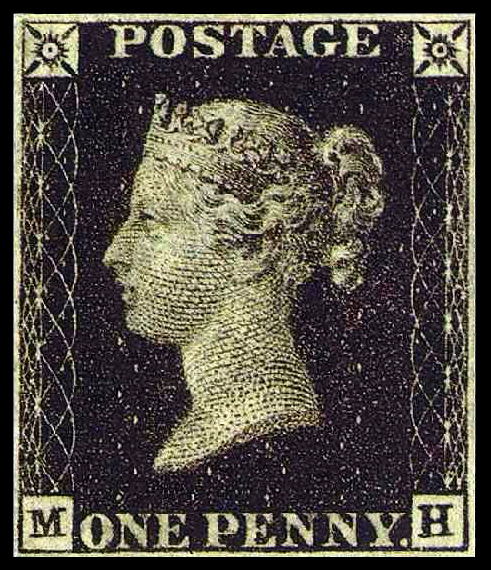
Stamp collecting began shortly after. It is referred to as The Hobby of Kings due to various kings being stamp collectors. Britain's King George V (June 3, 1865 – January 20, 1936) is one of the most famous. King Carol II of Romania (October 3, 1893 – April 4, 1953) was also an avid collector who is said to have lived in exile off the proceeds of his vast collection. But not to leave queens out, Queen Elizabeth is estimated to have a collection worth 100 million. I kid you not. There are some postage stamps where only one example exists. King Farouk I of Egypt (1920–1965) was an avid collector and is said to have specialized in error stamps. Errors are when a stamp is released to the public and unknown to the postal authorities an error later found. One of the most famous is the 1918 American 'Inverted Jenny', a stamp with a plane accidently inverted on the face of the stamp. Only one pane of 100 of the stamps was ever found. It is a legend in stamp collecting. A single Inverted Jenny was sold at auction in November 2007 for whopping $977,500.
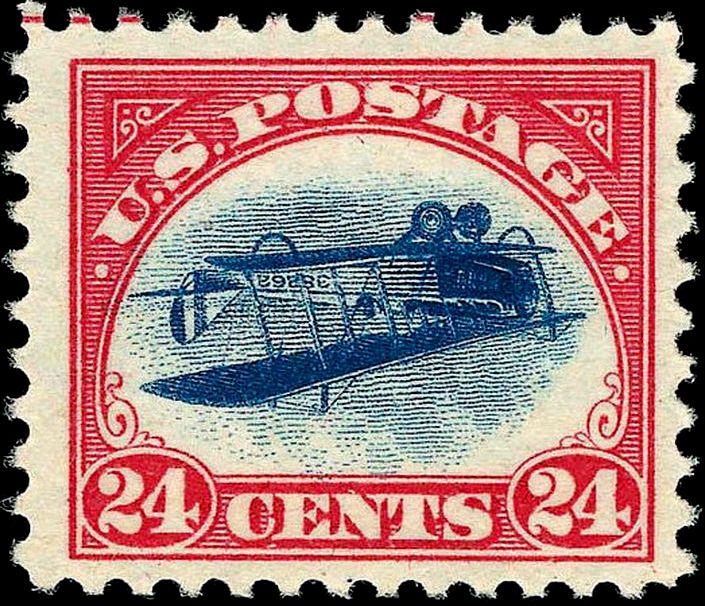
There are many different types of stamps collecting, some more popular than others. Among the types are:
But like other many other traditional hobbies typically done by white people, stamp collecting is dying. Other hobbies like coin collecting, trains, antiques, etc., have been dying out for years. I have attended local stamp shows for years, and even when I first started around twenty years ago I was the youngest person there by decades. Nowadays most of the collectors and dealers are 75+ years old. People would often start their love of stamp collecting as children. Now, in the midst of our decaying world, children are too busy staring into their phones. Their intelligence is stunted by a world that prizes idiocy. Their favorite 'music' is rap garbage which exalts every form of degeneracy and stupidity that this age of spiritual suicide has to offer. But you already know all of this, so, on with the show!
[Below: 1935 postcard 'Deutsch ist die Saar' = 'The Saar is German']
[Below: Postcard reverse.]
[Below: A Feldpost postcard sent on September 29, 1941]
[Below: Postcard reverse]
[Below: 'Victoria' (Victory) postcard featuring the slogan 'Deutschland Siegt An Allen Fronten Für Europa' (Germany Victorious on all Fronts for Europe). This slogan or just a 'V' for victory was used during the height of Germany's victories, but was only used for a handful of months due to their declining fortunes on the battlefield.]
[Below: Here's an interesting postcard from 1913 showing a swastika shield. It obviously celebrates Germans around the world, the shields say German American, German Swiss, German Austrian, German Russian and Germany itself... but oddly the swastika shield doesn't have anything on it. Hmmm...]
[Below: 'Turnfest' means gymnastics.]
[Below: Wow, this is a true beauty. A pretty rare postcard too. Can any German out there translate this to English for me?]
[Below: 'Deutsches Turn -u Sportfest' (German gymnastics and sports festival). Check out that cool eagle on the bottom right...]
[Below: The postage stamp and cancel are both commemorating the Breslau games in 1938 (July 24 - 31). This was the last big sports event in Germany before the war. It was held in a region known as Silesia, which was stolen from Germany after WWII and made into Poland. The stamp seen here was part of a set of four released on June 21, 1938.]
[Below: Tag der Briefmarke (Day of the Stamp). In 1934, the idea to celebrate an annual Postage Stamp Day was suggested by Hans von Rudolphi, a German philatelist. The stamp seen here shows a collector with his album carefully looking at a stamp with tongs (what stamp collectors use to carefully pick up stamps as to not get acids or dirt from your hands on the stamp, it's basically tweezers but without the gription within and a wider tip. This stamp was released on January 11, 1942. The postcard on the right has an unusual red ink cancel for the town of Mühlhausen.]
[Below: Here we see another example of a postcard celebrating the Breslau games.]
[Below: These postage stamps bear the image of the People's Hall, a massive domed stadium made by architect Max Berg in 1911–1913.]
[Below: ...]
[Below: Gosh you can almost read this guy's name... whoever this is he is a total hero, earning the Knight's Cross, Oak Leaves and Swords!]
[Below: ...]
[Below: Front. This is very cool and strange. It is a Feldpost card, which is odd in itself to find something like this as a Feldpost, but it is also a pop-up card. First let's look at what it says:
It's very interesting that they would call this the 'Druid's Foot'! Way back in the day when we were looking for a symbol to represent Mourning the Ancient we found out that the pentagram represented truth in ancient cultures. That it didn't represent 'the devil' as popular culture depicted. But so many pagan symbols were perverted by early Christianity into something evil. But anyway, back to the Druid's Foot. Way back in the late nineties I remember one of the guys from ...the Soil Bleeds Black (a superb band of ambient music) told me after we were discussing the true meaning of the pentagram that in ancient times the druids would draw the pentagram on the soles of their feet, thus they would be 'walking with truth'. I never heard about that from anyone else, nor have I ever read about it, but I trusted the source, and always remembered it. Well, here it comes full circle, all these years later, on a soldier's postcard from the 3rd Reich.]
[Below: Reverse.]
[Below: Now here is something incredibly strange to find from the Third Reich. This is a postcard with a testing stamp for a new machine cancel (as seen on the ink stamp). It says 'Frankiere nur mit
freimarkenstempler' (Franking only with postage meter) and is from March 1, 1940. While this isn't too expensive on today's market, I've never seen one before in years of collecting. I wonder if there are others? With different stamps?]
[Below: Close-up.]
[Below: Close-up.]
[Below: Back of postcard.]
[Below: This was sent registered and was postmarked on June 28, 1943.]
[Below: Close-up.]
[Below: Reverse, the oval ink stamp is from a train.]
[Below: This government employment office envelope has a cool look to it.]
[Below: (I've inverted it so you can see both front and back without you having to hang upside down like a bat). This is a very unique philatelic item that someone spent a lot of time thinking about. It uses an old pre-paid envelope with an old 'Germania' postage stamp on it, which has been 'canceled' with a fake cancel. It is postmarked on April 6, 1941. The back of the envelope (the top) has an advertising stamp (with the stamp dealer's name) stuck on it, adding another element of uniqueness. Also on the back is a message: 'Ein Osterei und Frühlingsgruß!' (An Easter egg and Spring greeting), so I guess that oval shape is an Easter egg. The 'Tolima 1884' refers to a Colombian stamp.]
[Below: Close-up.]
[Below: The envelope opens to a postage stamp price list.]


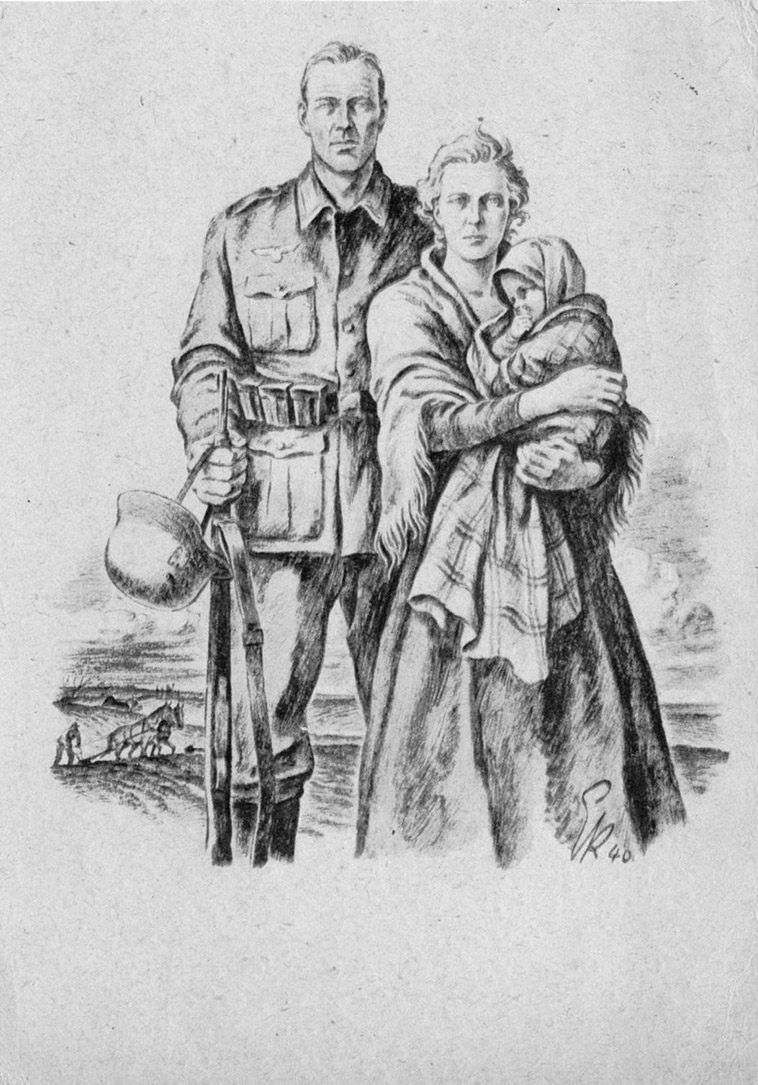
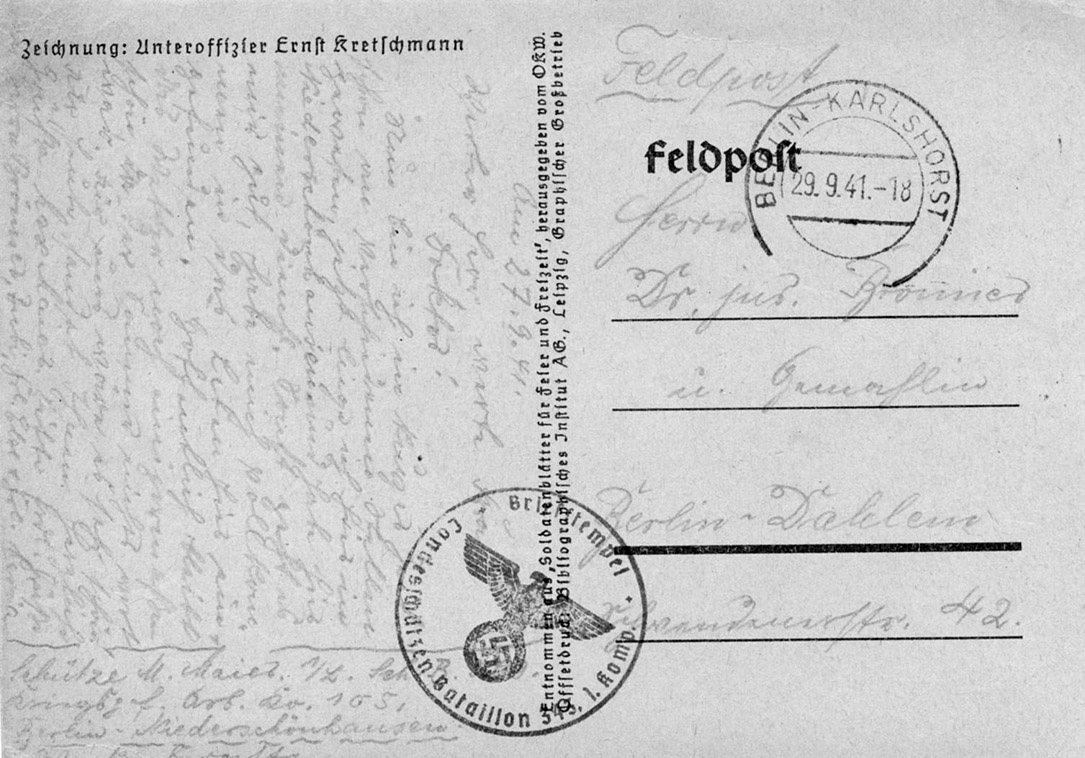

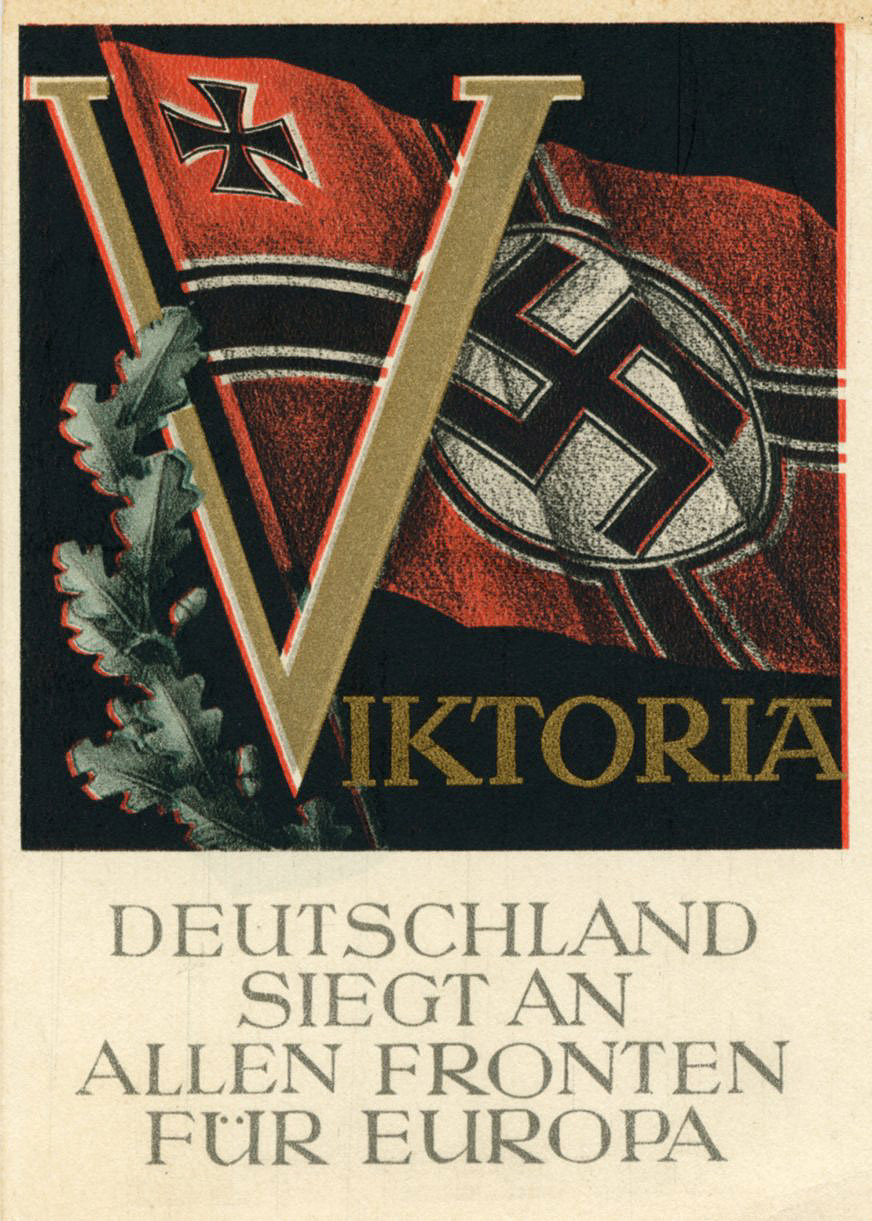

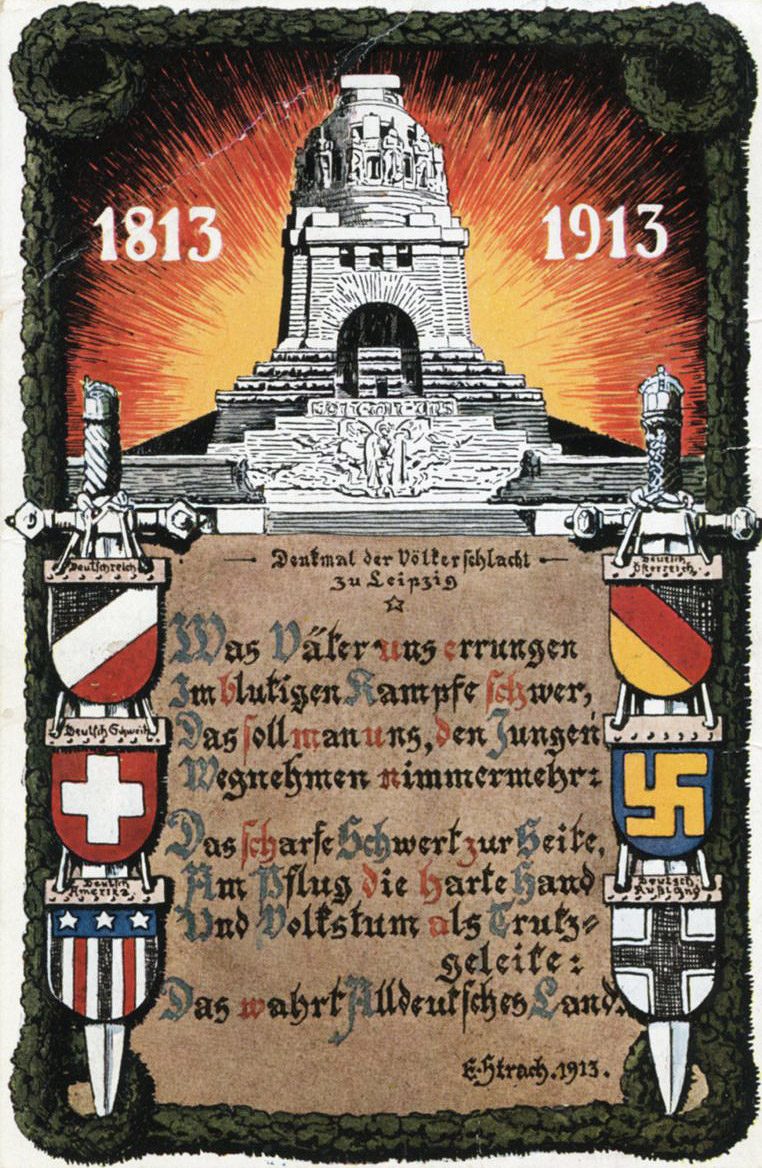
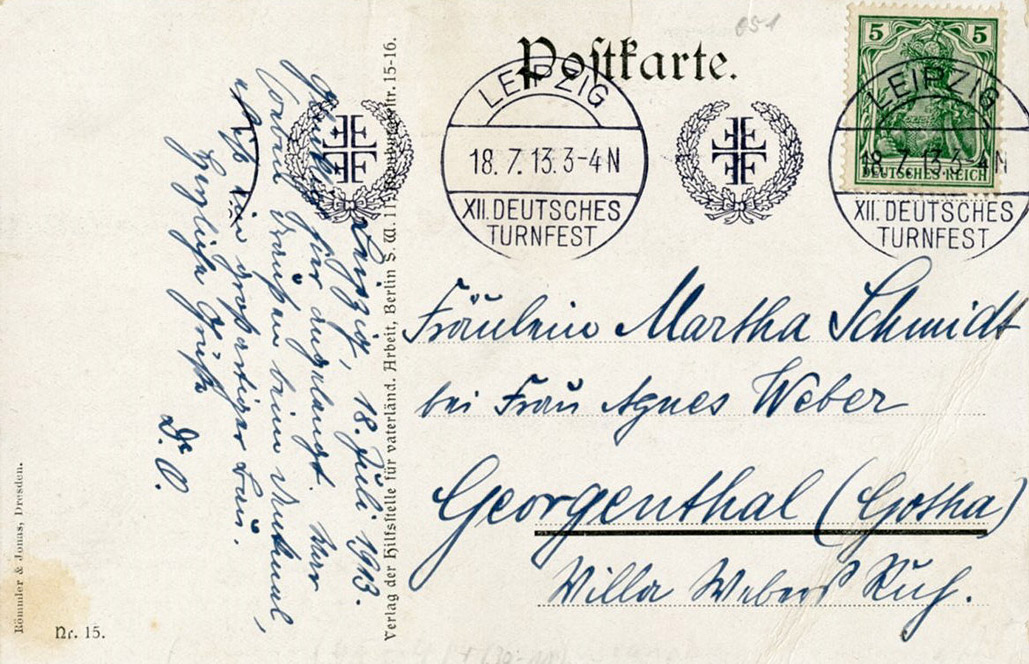

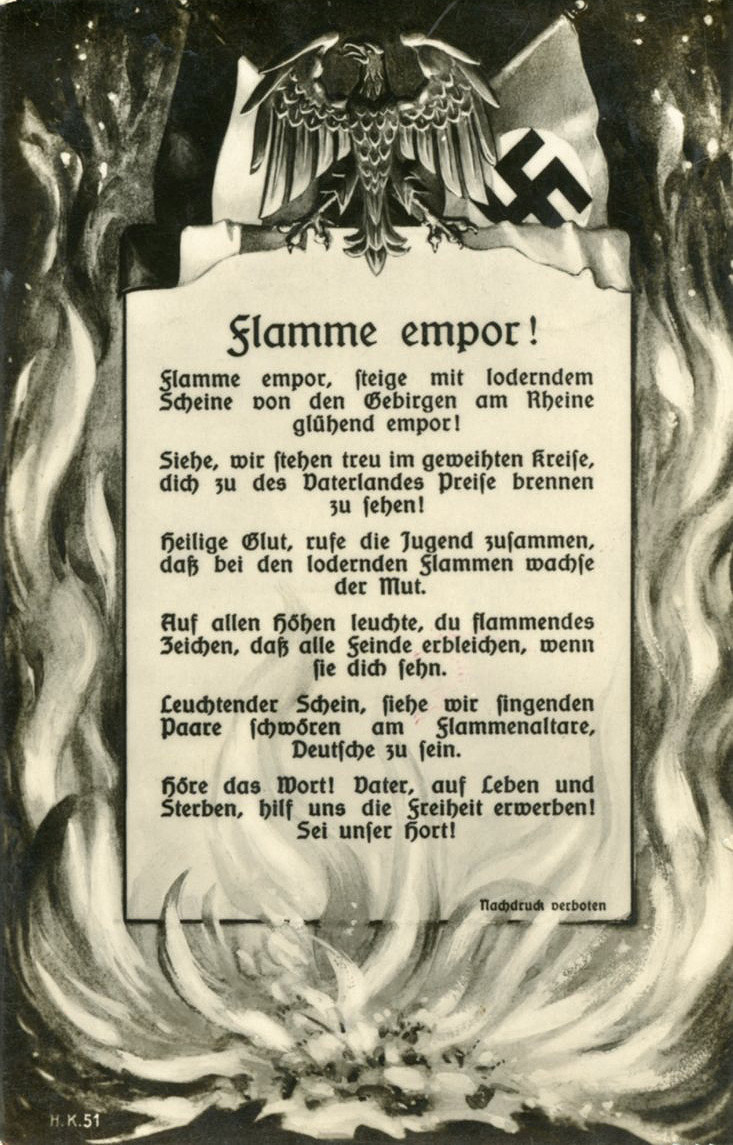

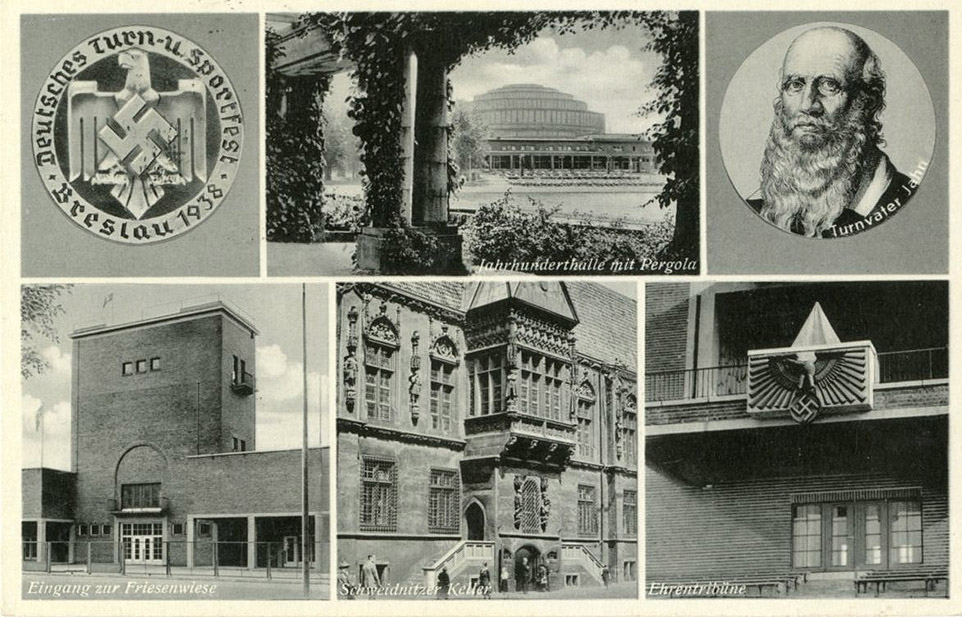
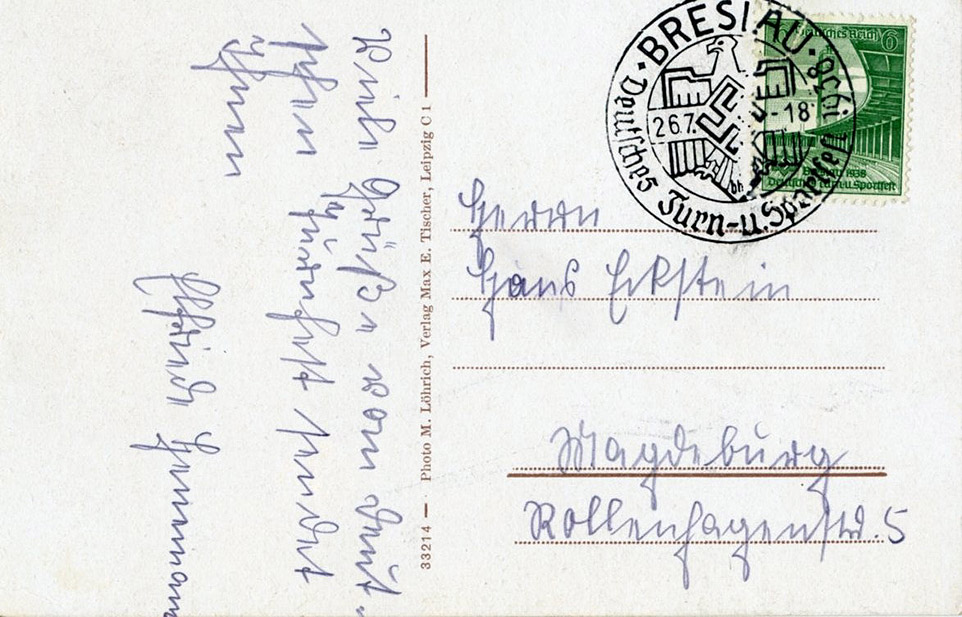


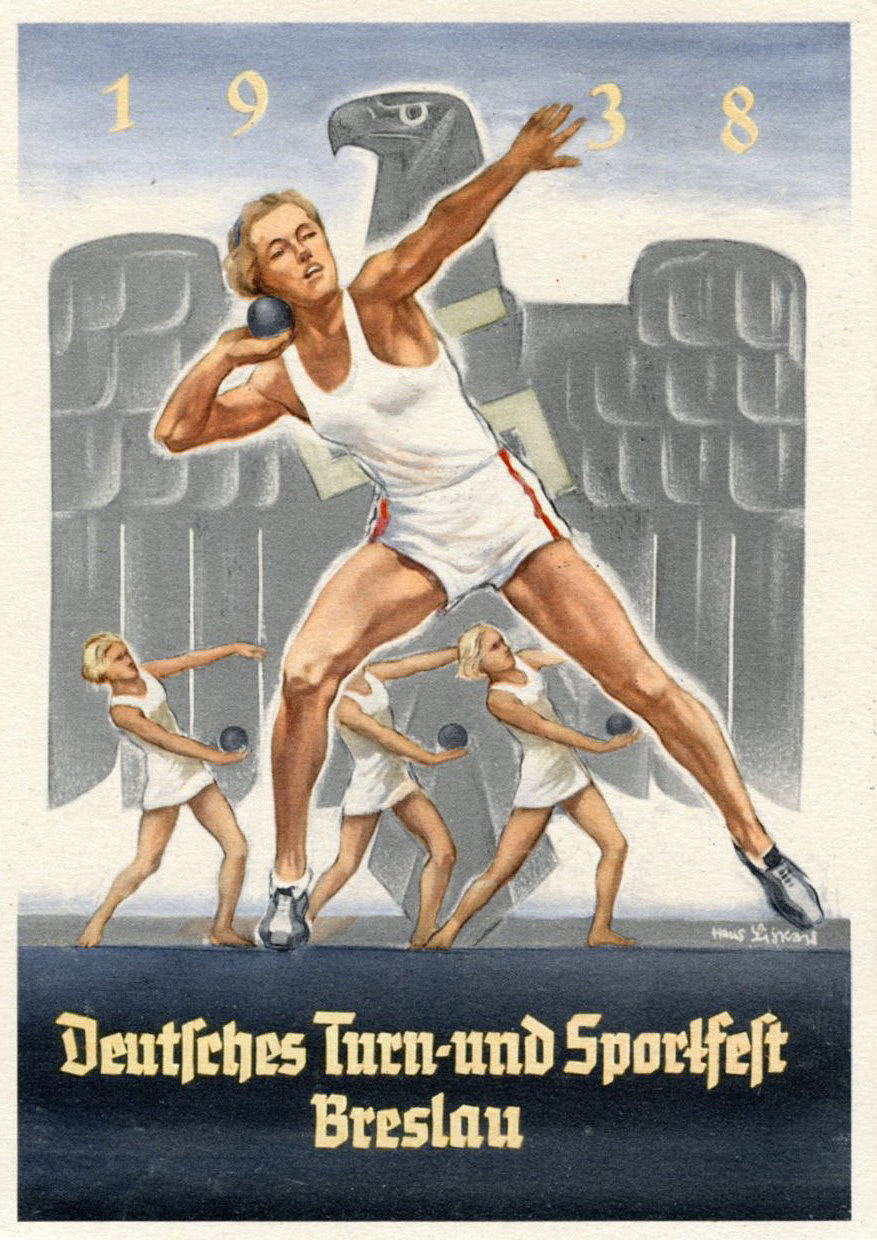
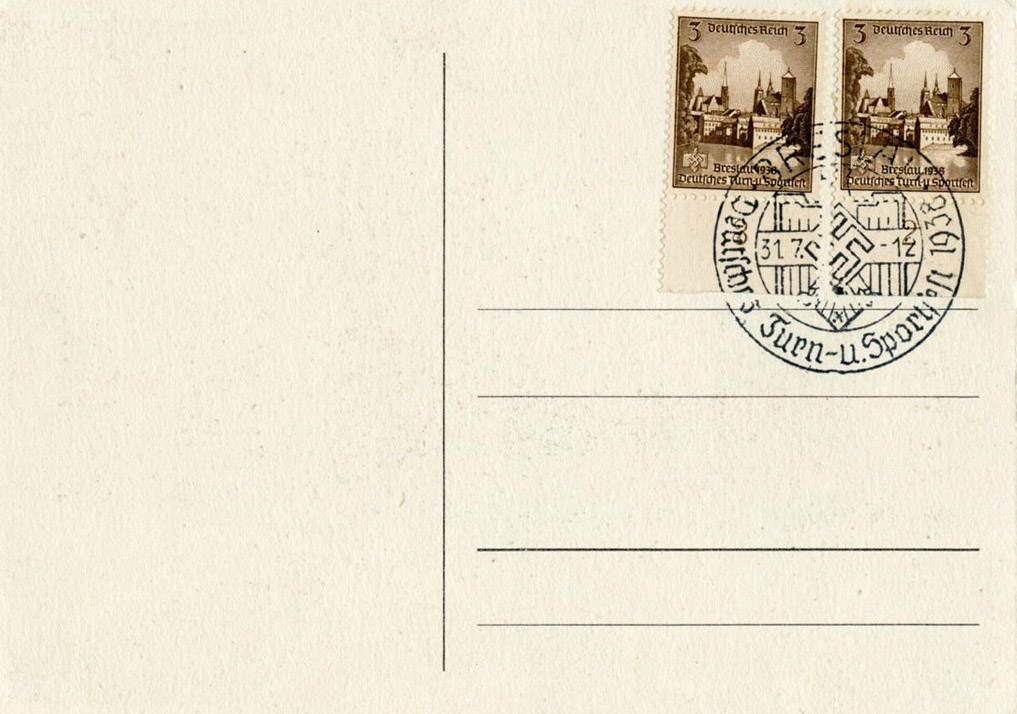

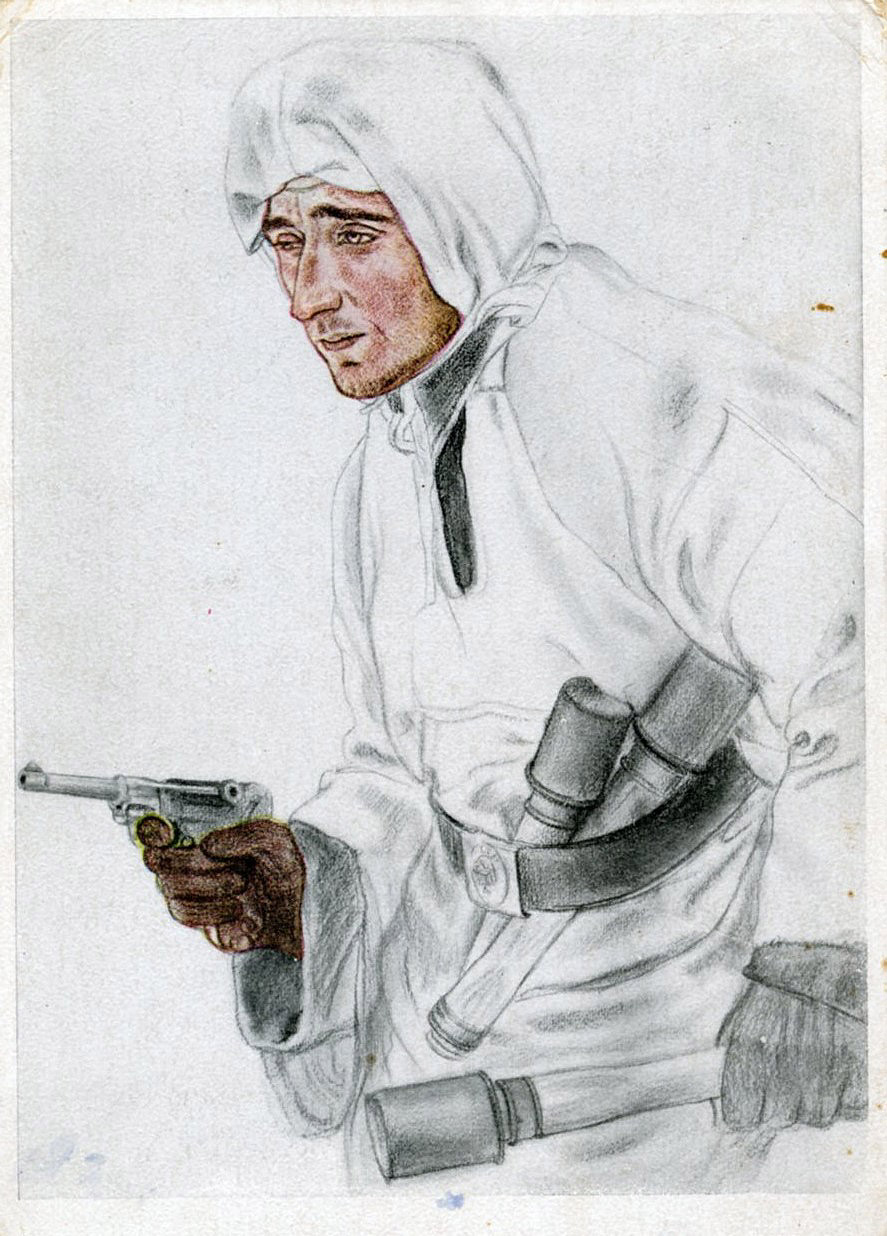

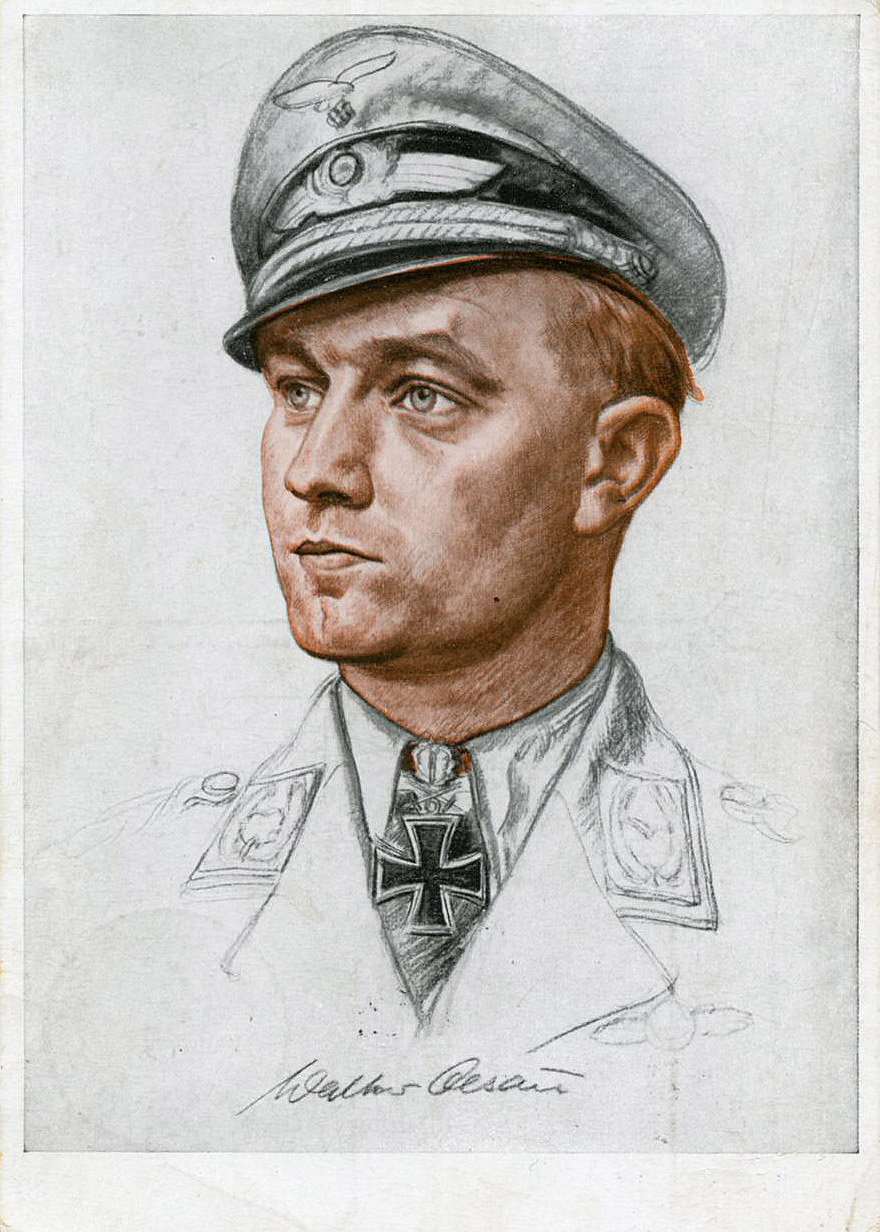



'Das Pentagramm (Der Drudenfuß)
dessen Schnittpunkte im Goldenen Schnitt liegen.
Aus 10 Dreiechen als Fenster herzustellen.
(The Pentagram (The Druid's Foot)
whose intersections lie in the golden section.
To be made of 10 triangles as a window.)
